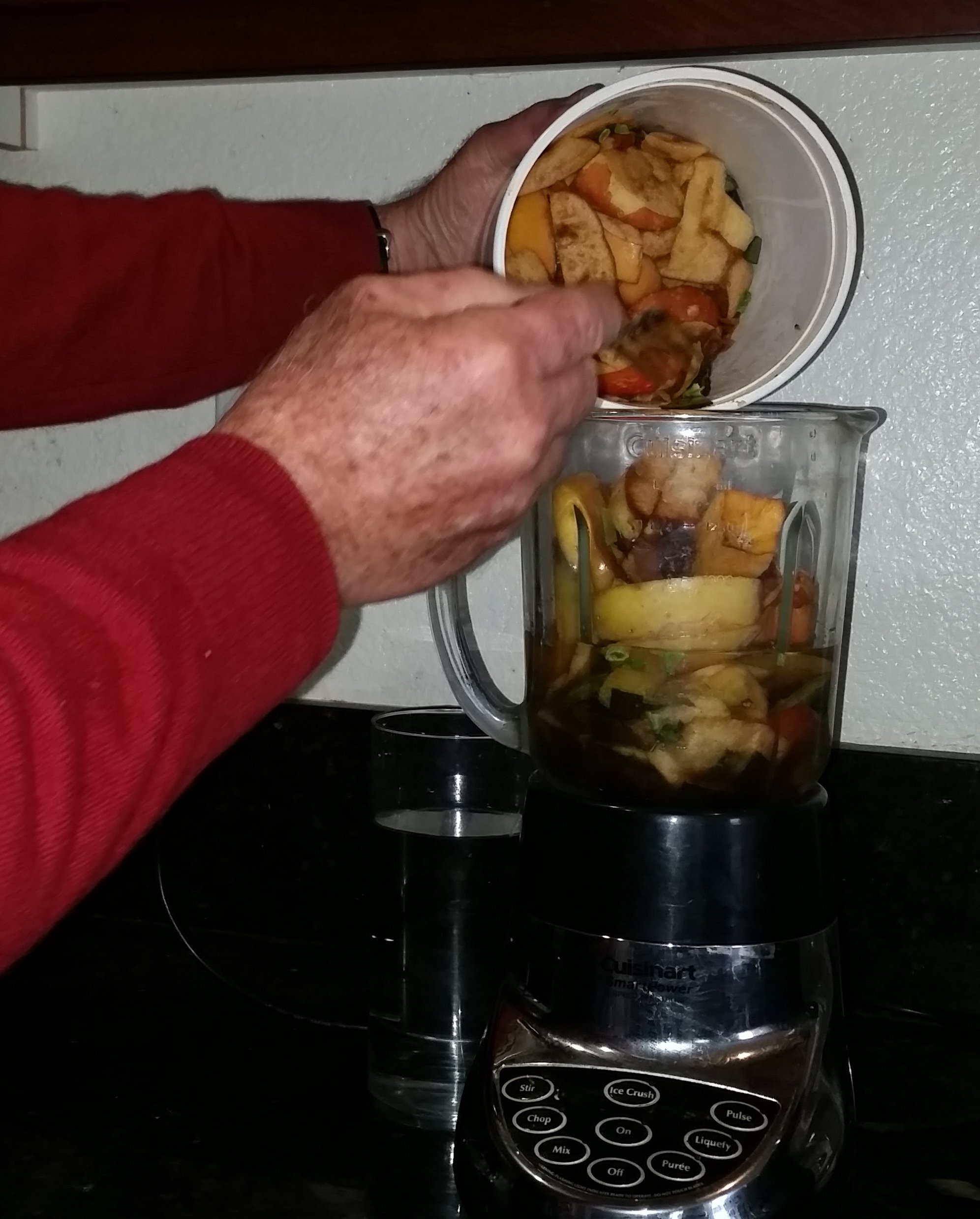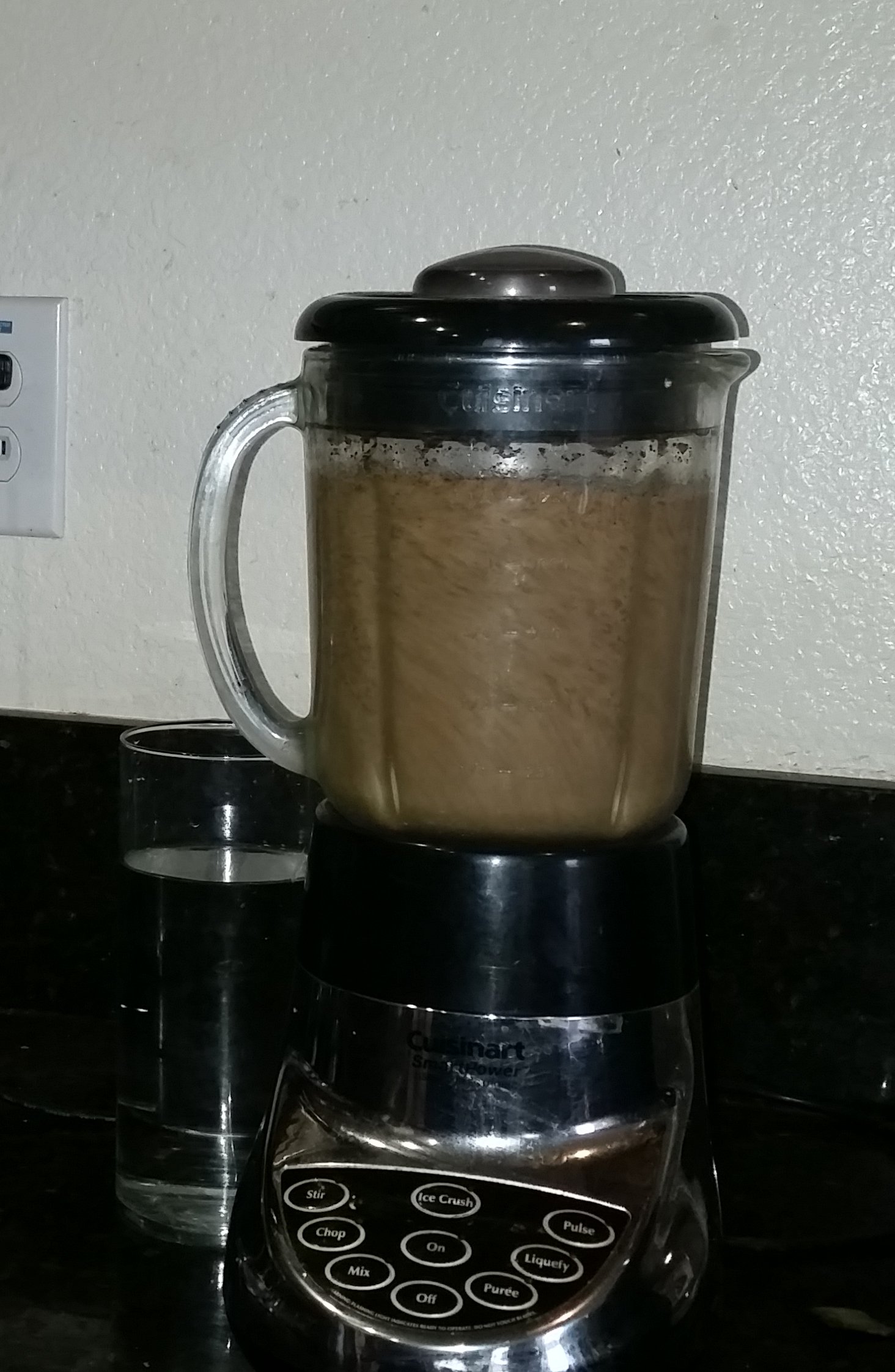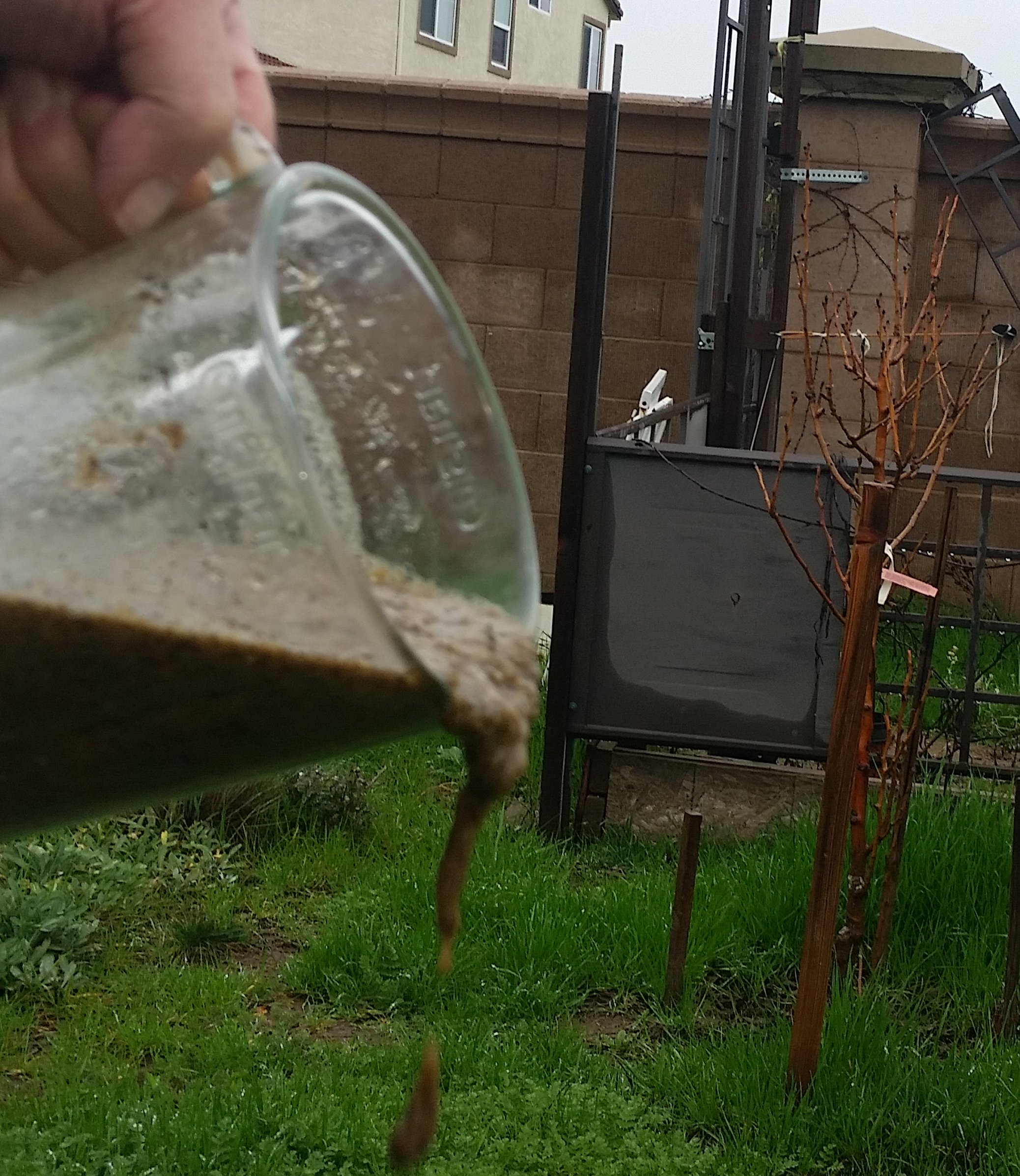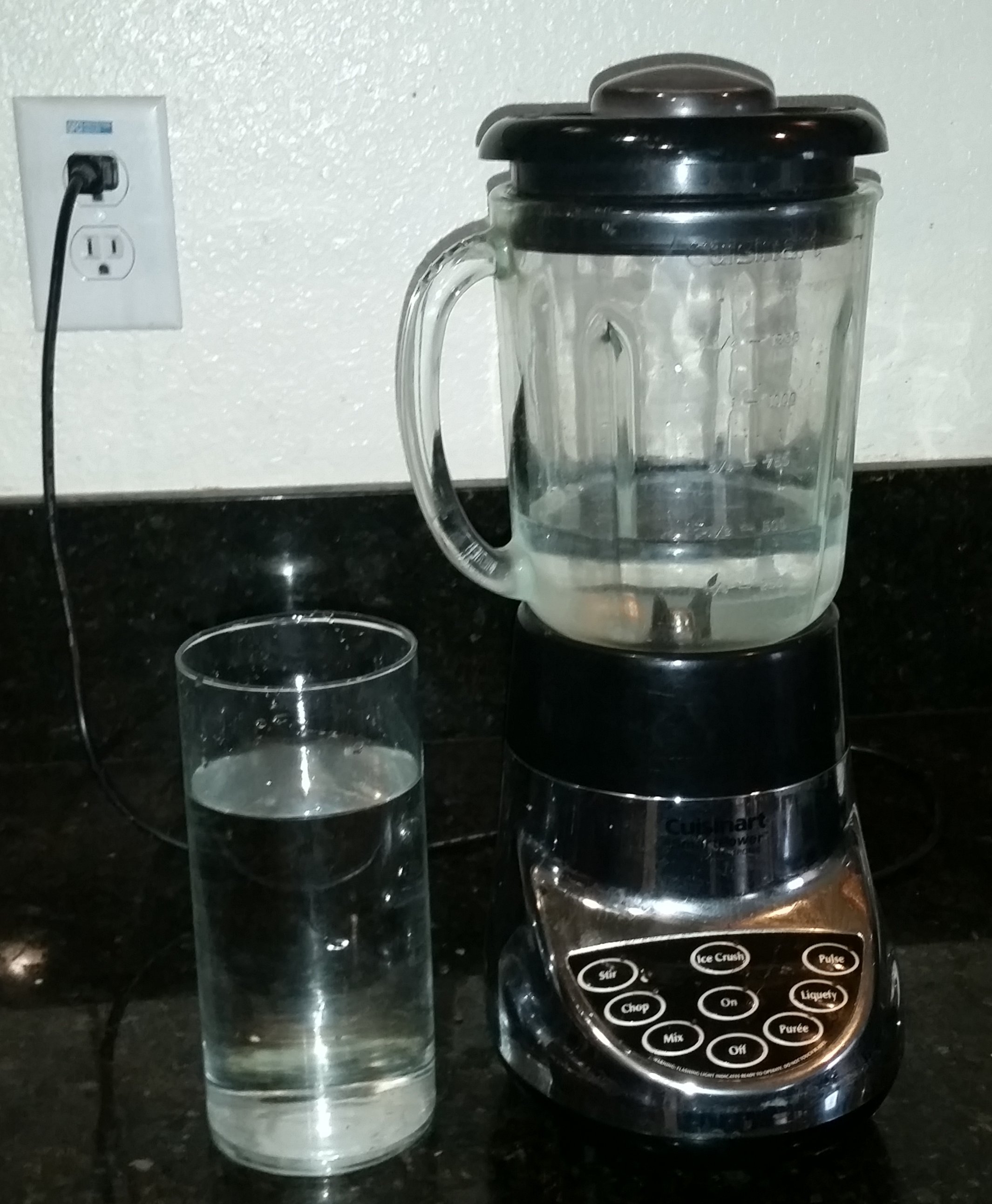The recycling movement has tried to turn composting into a special process unconnected to anything else. Thus they cynically modify the three R’s into the four R’s: Reduce-Reuse-Recycle-Rot. But the Zero Waste movement simply sees composting as one more design process for eliminating waste and inefficiency from agricultural processes. It is a normal ZW activity.
Composting is a way to reuse the nutrients that come from soil in the form of food and fiber, back to the soil. It is the most quintessentially natural reuse method, and the only one that, by definition, depends on the decomposition processes of nature. Though there is much talk of biodegradable plastics, that is a mistaken design, which makes cynical use of the popular delusion that waste is a given and needs to be destroyed. There are some industrial byproducts which can be turned back to agriculture in the short term, such as plaster (calcium sulfate), from making drywall that provides a calcium supplement, but it would be much better to use the high purity calcium sulfate as a high purity input for industrial reuse, without degrading it in soil.
There is a movement, financed by the garbage industry, to replace aerobic composting with anaerobic digestion. This term meaning “no air”, uses different bacteria that operate in the absence of oxygen. To exclude oxygen, the digestion goes on inside closed, industrial vessels and requires external heat. Anaerobic methods, which require much more equipment and capital than composting, convert an insignificant amount of organic matter (less than 5% by weight) into methane which can then be sold and burned. And they use half of the methane themselves just for heating the pile, leaving less than 2.5% for capture. However, this allows the garbage companies to pose as energy producers while destroying all the much more significant values of a rich compost. The remainder becomes a slime of doubtful use. The worst proposal, that only Big Garbage could think of, is to put an entire garbage stream, including TV’s and tires, into the vessel along with the organic part. Everything not organic then becomes covered with the slimy residue so that even their beloved recycling is not possible. The environmental movement needs to get more savvy about what is really going on. That means subjecting even green-sounding proposals to serious scrutiny. However Anaerobic Digestion has the great advantage to its promoters of requiring gobs of capital investment thus lifting it above the reach of individual citizens or small enterprises and cementing Big Garbage’s control over the river of garbage.
Sometimes industrial composting suffers from an odor problem as the odor of decomposition escapes from the facility. It is worth noting that there are composting companies who sell vessels to be used for aerobic composting inside of reactors which contain all odors and effluents. So it is not necessary to go to anaerobic methods in order to re-express composting as a self contained industrial operation.
One of the obvious values of compost is its ability to reuse natural nitrogen back into soil. I have therefore calculated the amount of energy used to produce synthetic nitrogen via the extremely energy intensive Haber Process for fixing nitrogen under high pressure and high temperature. The calculation shows that world synthetic nitrogen uses the output of 120 large power plants. This is the minimum standard against which methane generation must be measured. It is only a minimum because compost provides many other important values – not just nitrogen. See calculation. Surprisingly, it is estimated that natural nitrogen fixation worldwide fixes only half the amount fixed by synthetic methods.
As an order of magnitude, the question becomes: does anaerobic digestion produce anything like enough methane to run 120 power plants? If not, it is not in the same universe of energy saving as composting is. I doubt that any promoter of anaerobic digestion would dare to compare it to this standard. But the jury is still out.
BETTER THAN COMPOSTING
It is worth mentioning that composting is not some magic solution and is not always the best use of all organic matter. Often there are better uses for organic matter because it has a higher form, a low entropy function, that can be exploited before turning to molecular disassociation i.e. composting. Maybe it is in the form of lumber which needs to be used qua lumber. Maybe it is perfect for growing mushrooms on. Maybe it should be chipped and used for barbecue or cedar chest flavoring. Later it will still be usable for composting. The most obvious example is edible food. As a rule, all food can be composted and it will add to the nutrient value of the compost. But it is criminal to compost food when hungry people are waiting to eat it. If excess food is not edible by humans, it may still be excellent for animals. If you can’t keep chickens or goats, then find nearby farmer that can use your quality, segregated food scraps. We must always search for the highest functional use, not just turn to the simplest way to get rid of some excess because we think it is easy or available or because someone knows how to make easy money by charging for removal and then throwing it on the compost pile. The last method is favored by the garbage industry. They are trying to assert ownership of composting in every town in America, even though composting is an independent industry that has nothing at all to do with the garbage industry.
A small start is to stop using the name “waste” to refer to excess organic matter that was once food. There is no such thing as “food waste”, only a poverty of your imagination or your ability to use it. Every time you use the term “food waste”, a dollar rings up in a cash register of Big Garbage somewhere.
There are some organic materials which are loaded with poisons and should at least not be added to normal compost, even if the poisons happen not to prevent bacteria from working to break down the organic matter. The recyclers, and the government, would undoubtedly shriek in horror and pass draconian laws with heavy penalties to force you to throw such economic poisons into a dump immediately. But let’s try a little common sense instead.
One example is chromium arsenic treated lumber. This greenish/khaki colored lumber treatment prevents microbes from breaking down the lumber, so it has a long life. Obviously it should be disassembled from any application as carefully as possible with an eye to reusing it for as long as possible. It is not wood! It is a special material with special properties.
Another candidate is grass clippings that come from golf courses, or any other lawn that is heavily treated with herbicides. These need to be kept separate, perhaps dried and ground, then re-applied to the same kinds of lawns they came from. They contain an expensive chemical that is being used in those places anyway, whether you agree with the use or not. At least make use of it while it is circulating in the environment.
The most exciting alternate use for natural products, rather than to compost them, has come along recently as David Blume has launched a campaign to convert cellulosic and other excess agricultural products into ethyl alcohol. His book Alcohol Can Be A Gas breaks new ground in making unexpected connections. For example he points out that the starch in corn which is fed to cattle is actually indigestible by them and causes disease which then has to be treated by dousing them with antibiotics. If the corn is fermented into alcohol and distilled, the resulting byproduct, known as distiller’s grains, has all the nutritional value that the cow was able to extract from the whole corn but without the irritating starch.
The use of all manner of agricultural and other excesses for growing mushrooms has been pioneered by Paul Stamets. His many patents and books point out many ways that mushrooms should be used instead of, or usually, prior to composting, for an even higher return on the material to be composted. See his Mushroom Seminars or his book Mycelium Running.
In a recent cycle of articles by Grist about dumpster diving for food, a basic realization about production was clearly stated:
“As for the environmental impacts, a 2009 study found that food waste in our country accounts for 300 million barrels of oil and 25 percent of our freshwater supply every year. That oil and water are used to produce food that winds up in landfills, rots, and produces methane, a greenhouse gas 24 times more potent than carbon dioxide. And if you know anything about meat production, genetically modified crops, pesticides, soil degradation, and global warming, you undoubtedly have an unsettling picture of how destructive wasting food is—because you know how destructive producing it is.”
This is the core of what we have been pointing out everywhere on this website. It is not the final discard which causes the significant waste but the endless and unnecessary production of goods that should have seen full functional use the first time around. It is not throwing usable food into a dump or even a compost pile where the waste occurs. It is in remaking, regrowing that food unnecessarily. That is the waste that we need to eliminate. We can put every last scrap of unused food into a compost pile and still be accomplishing almost nothing of any value. At least not compared to using that food for its original purpose so that it does not have to be created all over again.
It is a truism for organic compounds on this biologically rich and thrashing earth that everything rots. Everything has a microbe somewhere, lurking to find it and eat it. So why do we actually need composting? Why not let things rot in other ways? When we have huge industrial or agricultural inputs, like multi ton lots of wood, grass or agricultural byproducts, composting is a natural. But for residences, it makes more sense for each householder to take responsibility for his own excesses, responsibility being a core Zero Waste value. There is no need for fancy, expensive composting when bacteria are ubiquitous. Who does not have access to a few square feet of soil, teeming with microbes? Yet you don’t want to overload your few bushes with obvious apple cores, orange and potato peels, expired celery stalks and eggshells. What is needed is a simple appliance that grinds up every kind of food scrap, perhaps with a little water, into a slurry without gross, identifying components.
This can be poured on the ground once a day, fertilizing the bacterial ooze and will disappear overnight as it is digested naturally. There is no need at all for the heat of composting, traditionally invoked for destroying weed seeds. This input contains no weed seeds. 
Birdcage sawdust and kitty poop can easily be added to the mix and will disappear just as efficaciously. Creating and selling an appropriate household grinder could be one more Zero Waste business. In my house I save all food scraps and cut them up into small pieces with a carving knife and a cutting board to assist the grinding, because I don’t have a dedicated grinder to use. Instead, once a day approximately, I put water into a blender and add the food scraps in increments. I have sharpened the cutting edges of the blender blades for their new use.
 There is no reason to make the slurry thick. Use enough water to make a thin soup and allow the blender to work easily. A further innovation would be to add a spoonful of soil to introduce microbial life intimately into the soup. Pour it on or near a bush for a fertilizer.
There is no reason to make the slurry thick. Use enough water to make a thin soup and allow the blender to work easily. A further innovation would be to add a spoonful of soil to introduce microbial life intimately into the soup. Pour it on or near a bush for a fertilizer.
 I exclude hard or fibrous objects like fruit pits or corncob leaves which obstruct or clog the blender. Those I put on the ground directly, though fibrous materials (even corncobs!) can first be cut small with a large knife and then the blender can probably handle them.
I exclude hard or fibrous objects like fruit pits or corncob leaves which obstruct or clog the blender. Those I put on the ground directly, though fibrous materials (even corncobs!) can first be cut small with a large knife and then the blender can probably handle them.
This approach has one huge advantage that might not be on everyone’s minds. The alternative, always put forward by the recyclers as they promote garbage generation, is to insist that every household collect food scraps in containers which are then added to a central collection to be taken to a central composting facility run by —- who else but their favorite garbage company? For one thing, this again cements the central role of Big Garbage in everyone’s life. But in this case, this kind of collection is rife with problems, such as dirty containers and public rejection and is often deemed to be impossible to implement, thus putting us all right back in the bad old days. But with distributed grinding, everyone can easily participate. As communal vegetable gardens become standard, the ground up inputs will be seen as an invaluable addition to the fertilization of vegetables.
What’s that you say? Not everyone in a big city has access to enough soil to be pouring their organic slurries on? What does that indicate? Only that intelligent Zero Waste is never an End-Of-Pipe add-on to existing absurd ways of living. In this case too, the absence of soil is a problem with even wider implications. There is a city gardening movement and here is even one more reason to expand that concept so that every neighborhood has enough growing soil for all the participants to bring in their organic slurries and fertilize the growing vegetables. Why in the world would anyone dream of sending off all of the concentrated fertilizer of a whole city to a far away city and even, unbelievably, breathe a sigh of relief that it is all gone. Pure insanity!
Think of what a wondrous change it would make if every last scrap of organic matter was ground up and added to soil/bushes/trees. Most people are used to the idea that garbage is rotting, smelly, yukky, nasty. Why? Because in the Great Irresponsibility, food is just one more element of garbage and belongs with everything else, even that which is not organic. Have you got something extra? Don’t take personal responsibility for it. Just hire some lowly soul to solve the problem for you. In this case, mix everything together that you don’t want and hand to the garbageman. But if food is rigorously (Yes! not 99% but 100%) excluded from all wanton disposal, the remaining garbage, if there must be any, will be clean and odor free. Flies do not lay eggs in clean plastic covers or broken DVD players. If there is a garbage strike, as there was in Naples and other places in past years, garbage can be safely stored for as long as necessary in sanitary piles. There will be no smelly, unsafe mixed organic garbage to put the public uptight with its fly-laden rotten odor.
A recent article in Mother Nature News points out the failure and collapse of the centralized composting model on the populous East Coast. Read article. New York City bought into the delusion that it could collect up all its food scraps and ship them to a huge composting facility in Delaware which would take over full responsibility for it all. But the structural disconnects of this lazy and primitive approach have now asserted themselves to destroy such an absurd model. The essence of Zero Waste is responsibility for whatever you use, buy or control. Because the underlying model is based on the concept of garbage, people putting organic scraps into a separate container consider it all garbage and put any kind of unwanted goods in with the organics. “Oh, hell! It’s too much trouble to divide everything up.” So when the organics get over to the composter, it’s full of plastic and steel and copper and glass and all of that has to be painstakingly removed. While this is going on, the organics continue to decompose, creating all manner of liquids and smells. But who ever said that composting inputs need to be full of garbage? Only when responsibility is shucked over to someone else will this be a problem. And who said that composting has to be done in huge piles creating smells? There are now available medium sized vessels for doing the composting which can contain all the liquids, smells and heat and aerate the compost continually, thus reducing the composting time to just a few weeks. These kinds of units can be mobile or can be slotted into a neighborhood, especially where food processing plants produce a great deal of output that can’t easily be slurried and poured onto gardens. The practitioners of anaerobic digestion may think they have a monopoly on in-vessel methods but they are wrong. At least one subscriber to this blog sells custom-made in-vessel equipment for aerobic composting. The delusion that all organic scraps have to go far away to some huge facility is clearly nonsensical.
The use of misleading and trivial analysis pervades the environmental movement and composting is no exception. An article in a Kentucky newspaper recently quoted a study done in Los Angeles which purports to show that it is three times as environmentally beneficial to bury woody branches, leaves and grass (they call it “greenwaste” of course) in a dump as it is to compost it. Where could such an absurd conclusion come from? Just as they reach their high recycling rates by leaving out anything that doesn’t fit, in the same way, they leave out the primary, intended benefit of composting in order to focus on nothing but CO2 generation. They dress it up as Life Cycle Analysis and tie it with a bow. Of course it is no accident that the conclusion benefits Big Garbage. Since burying wood in a dump produces its CO2 slowly, while composting produces CO2 quickly, the advantages of burial are exaggerated. No mention is made of the fact that in the one case you have a pile of useless buried crap to show for your effort, while in the other case you have a fertilized, productive field growing food. The moral: take all environmental studies with a grain of salt. It gets complicated when interrelationships are taken into account.

